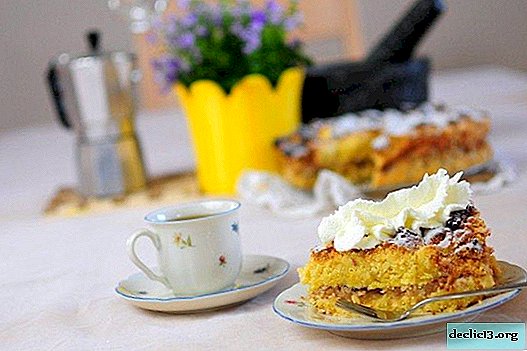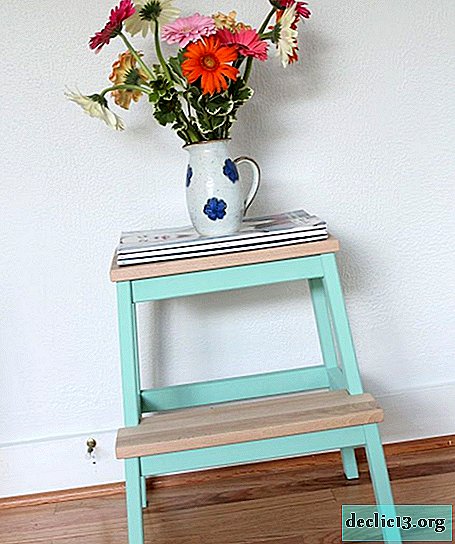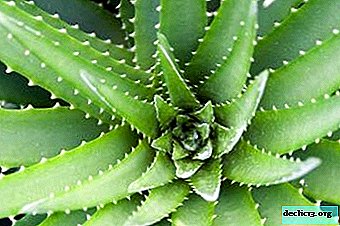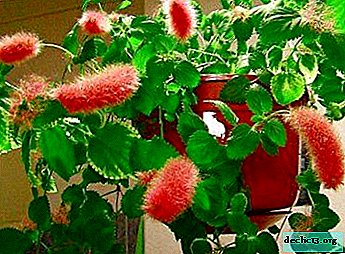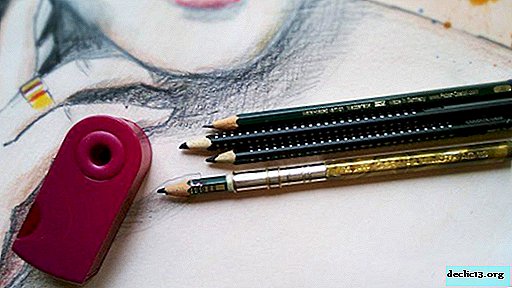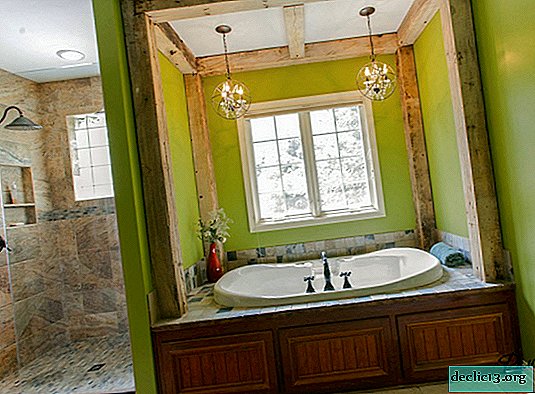Description and photo of variegated hibiscus. Rules for care and reproduction at home
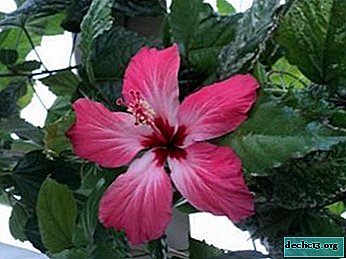
Variegated hibiscus is an evergreen plant that fits perfectly into any interior.
It can decorate both the room and any office. Ideal for beginner gardeners.
But for abundant flowering and high decorative leaves it is necessary to adhere to certain rules of care.
In the article, we will consider how to properly care for this plant and what problems may arise with improper care.
Botanical Description
 Variegated hibiscus - a fine variety of Chinese roses, belong to the family Malvaceae. It got its name because of the characteristics of the leaves, the colors, which vary depending on the conditions of detention. In bright light, they become variegated, green-white-reddish.
Variegated hibiscus - a fine variety of Chinese roses, belong to the family Malvaceae. It got its name because of the characteristics of the leaves, the colors, which vary depending on the conditions of detention. In bright light, they become variegated, green-white-reddish.
The second name of the plant is Hibiscus Cooper. He was given in honor of Daniel Cooper, it was he who first brought him to Europe from New Caledonia. Homeland Flower South China. In Latin, they call Hibiscus rosa-sinensis var. Cooper. It grows in Indonesia, Sri Lanka, Egypt, China, Indonesia and Hawaii.
Appearance: description and photo
At home, can live up to 20 years. A tall plant often exceeds 100-120 cm. Inflorescences reach a diameter of 12 centimeters, they are painted in pinkish or bright red shades. Ordinary or double flowers.Flowering occurs from March to October. After blooming, the inflorescences begin to fade after 1-2 days. In their place appear box fruits, inside of which a large number of ripened seeds. Leaves of various color combinations, covered with various patterns, and reach a length of 15 cm and a width of 6-8 cm.



Home Care
- Temperature. Favorable temperature for hibiscus variegated 20-25 degrees. In winter, it can be reduced, but not lower than 13 degrees.
- Watering. The plant is hygrophilous. During active growth and development, watering is plentiful, moderate during dormancy. It feels good when the substrate in the flowerpot remains constantly moistened.
When kept in a warm room, watering is carried out every 3-4 days. The water is used as decanted or filtered. After watering, the substrate is recommended to loosen. Hibiscus loves moisture, so it is sprayed daily or air humidifiers are installed in the room.
- Shine. The plant prefers bright diffused light. Feels good on the eastern and western windowsills. On the southern windows at noon, the pot is shaded from direct sunlight, otherwise the leaves may get burned.
When placed on the north side due to lack of lighting, flowering may be less plentiful. To form a uniform crown, the hibiscus flowerpot is periodically turned over with different sides to the light source.
- Priming. The flower grows well in light, neutral, moisture- and breathable soil. Of the prepared substrates, mixtures for citrus crops or flowering plants are suitable, or you can cook it yourself.
To do this, sheet soil, sod, humus and coarse sand are mixed in the same amount. A useful supplement is some lime or charcoal.
- Pruning. Pruning is carried out to form a crown and stimulate flowering. It can be carried out throughout the year, but best in spring. The process consists of the following actions:
- Remove lignified and dried shoots that grow parallel to the main branches.
- The remaining shoots are shortened by a third of the entire length, above the leaf that looks out.
- After flowering, pinch the tip of the branch.
If there are buds on the branches, then they are left and not touched. When working, use scissors or a kitchen pruner.
- Top dressing. Fertilizing plants is carried out from early spring to late autumn. For this, ready-made mineral complexes for flowering are used. They feed 1 time in 2 weeks. At the same time, a large amount of nitrogen should not be included in the composition of the fertilizer, since it activates the growth of green mass.
- Pot. The pot is selected a small, narrow pot size stimulates flowering, and a large capacity contributes to the growth of roots. There must be drainage holes at the bottom. Of materials, wood or ceramic is well suited.
- Transfer. Young hibiscus is transplanted annually, adult specimens every 3-4 years. Moreover, if the plant is very large in size, then only the topsoil in the flowerpot is renewed. Before carrying out the procedure for a day, the flower is abundantly watered. The transplantation process consists of the following steps:
- A drainage layer is placed in a new pot, and a small layer of earth is poured on top.
- The plant is carefully removed from the old container, the roots are inspected, if there are signs of decay, they are removed.
- Hibiscus is placed in a new flowerpot, the voids are covered with the remaining soil and lightly tamped.
- Then the plant is watered and put in a constant place.
- Wintering. In winter, the hibiscus has a dormant period. At this time, it is watered sparingly and carried out only in order to prevent the drying of an earthen coma. The temperature in the room is reduced to 14-16 degrees. To increase daylight hours, additional lighting is installed with fluorescent lamps.
Propagation by seeds and cuttings
To obtain a new plant at home, a breeding procedure is carried out. The process is carried out in two ways:
- Cuttings. 5–8 cm apical cuttings are cut from the mother tree. Slices are treated with a rooting agent. Then the cuttings are placed in sandy soil. Cover with a film, regularly ventilate and moisturize. After 3-4 weeks, full roots appear and the plant is transplanted into separate containers.
- Seeds A longer and more complicated way. Before planting, the seed is treated with a solution that stimulates growth. Then the swollen seeds are planted in a light substrate, moistened and covered with glass.
Periodically ventilate and maintain a temperature of 25 degrees. The first sprouts come out after 12-14 days, and with the advent of three leaves the plant is dived.
Diseases and Pests
 Variegated hibiscus rarely gets sick. But sometimes improper care may cause the following problems:
Variegated hibiscus rarely gets sick. But sometimes improper care may cause the following problems:
- Leaves fall and turn yellow. Too moist soil or stressful situations. Revise the watering regime.
- The tips of the leaves curl. Lack of fertilizer. Contribute to nutrients.
- Hibiscus fades all. The room is hot, dry air and drying of the substrate. Review the conditions of detention.
Often, pests attack the plant: aphids, scale insects, spider mites, thrips. With a weak lesion, the leaves are wiped with a soap solution, and with a severe lesion, they are treated with insecticidal preparations.
Similar flowers
- Abutilon. An evergreen plant, the leaves of which resemble maple in size and shape. Its flowering lasts from spring to late autumn.
- Kitaybeliya. A herbaceous plant with serrated leaves and large white flowers. It blooms from July to October.
- Dwarf Phyton. Ornamental plant. It has bright variegated leaves. Yellowish-gray flowers.
- Maranta. Low plants. The overall color of the leaves varies from delicate white to dark green, almost red. Moreover, depending on the conditions of detention, they can change their direction.
- Hypesthes. Evergreen plant, with large leaves, on which green and red colors are adjacent.
Variegated hibiscus is an ornamental plant that is perfect for growing at home. It is unpretentious in care, and with timely watering and feeding, for a long time it pleases with its beautiful flowering.


